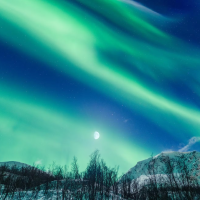What are "White Nights"?

What exactly are “White Nights” and what causes them?
This is the name of the long twilight, which lasts all night. From an astronomical point of view, twilight is understood as a period of time when the Sun is shallow below the horizon.
During the white nights, natural light remains high. The lightest night falls on June 21-22. In general, the period of white nights depends on the specific area and might start as early as May 25-26 ending as late as July 16-17.
This interesting phenomenon can be observed in temperate and high latitudes before and immediately after the summer solstice in a fairly large territory of Russia, as well as throughout Finland and Iceland, in most of Scandinavia, as well as in some regions of Estonia, Great Britain, the USA and Canada.
A similar term that is often confused is “midnight sun”, so here is the difference:
- A “white night” is a natural phenomenon where the sun does not set below the horizon, resulting in a night that is not completely dark.
- While “midnight sun” is a natural phenomenon where the sun remains visible above the horizon 24 hours a day during the summer months in regions close to the poles. This means that even at midnight, the sun is still visible or just below the horizon, resulting in a continuous day.
Have you ever seen “white nights” or may be even midnight sun?
Another thing to note might be that “White Nights” is also a festival that takes place in Braga, Portugal each September. The famous White Night of Braga will take place on September 8, 9 and 10 of 2023. The city center will become a pole for concerts, exhibitions, artistic installations and street animation.



